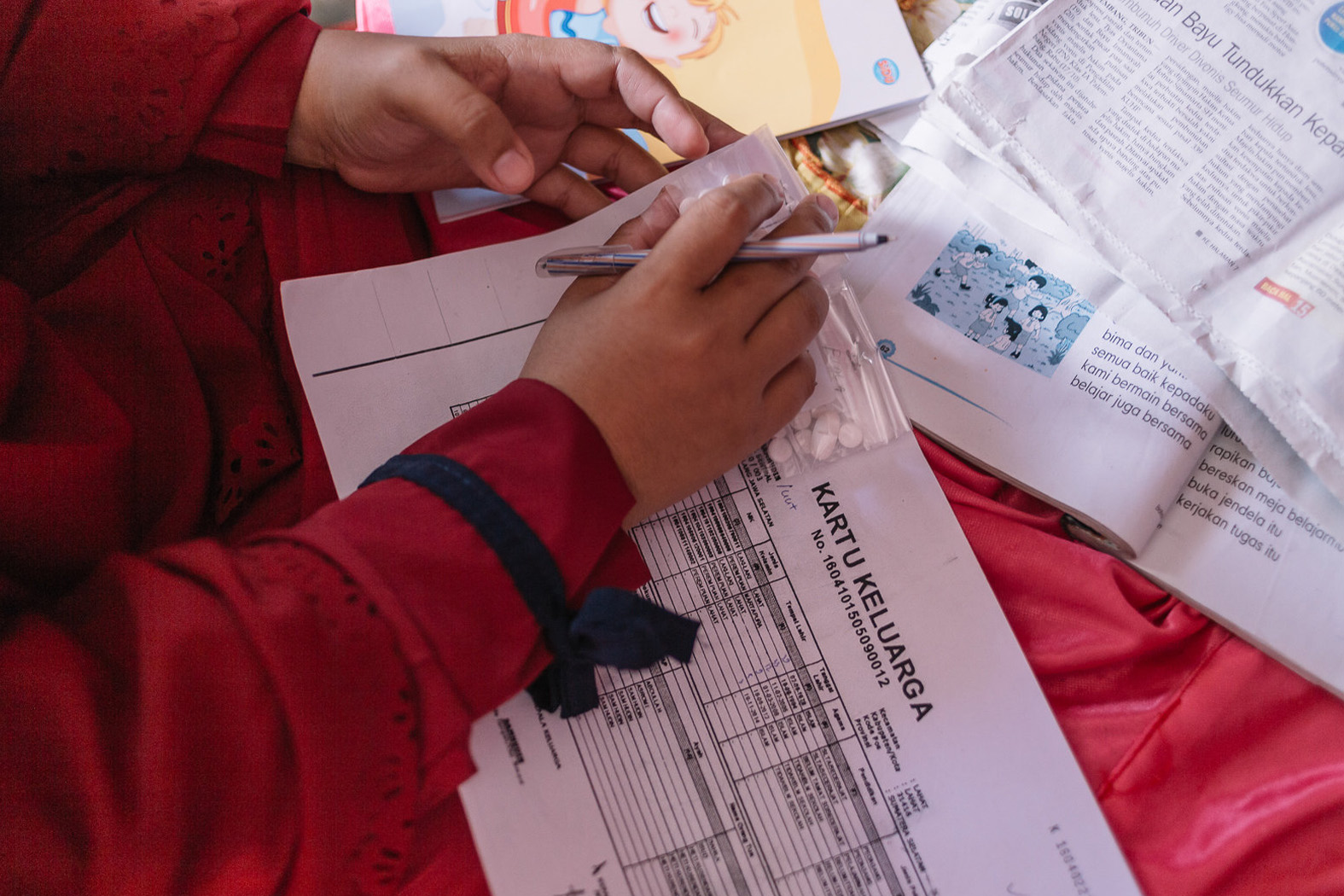Preventive chemotherapy
WHO recommends preventive chemotherapy as the core strategic intervention against four main helminth diseases: lymphatic filariasis, onchocerciasis, schistosomiasis and soil-transmitted helminthiases. Preventive chemotherapy is also a component of the SAFE (Surgery, Antibiotics, Facial cleanliness and Environmental improvements) strategy for the control, prevention and elimination of trachoma. It is recommended also for controlling morbidity due to foodborne trematode infections, and is a strategic component of WHO-recommended strategies against leprosy, scabies, taeniasis and yaws.
Medicines are generally delivered and administered to entire eligible populations or population groups mostly by non-medical personnel following a short training session. Schools, community networks and other social platforms are extensively used as outreach points to maximize coverage.

A child receives the proper dosage of Zithromax during a treatment campaign for trachoma in Mozambique.
Resources
Key publication
Preventive chemotherapy: tools for improving the quality of reported data and information:...
Latest publications
All →Elimination of human onchocerciasis: progress report, 2024–2025
Onchocerciasis, or river blindness, remains a major public health challenge despite decades of sustained efforts. More than 99% of population requiring...
Progress in eliminating onchocerciasis in the WHO Region of the Americas: Report from the Inter-American...
Human onchocerciasis (river blindness) is caused by the parasitic worm Onchocerca volvulus, transmitted by Simulium black flies that breed in fast-flowing...
Lymphatic filariasis (LF) is a vector-borne, parasitic disease in humans that results in immense suffering among people affected. This neglected...
Tools
Disease specific request forms for selected PC medicines
Foodborne trematode infections
Related activities




